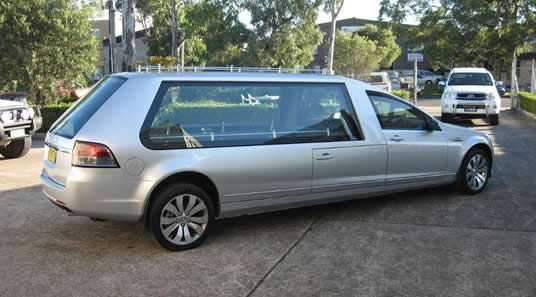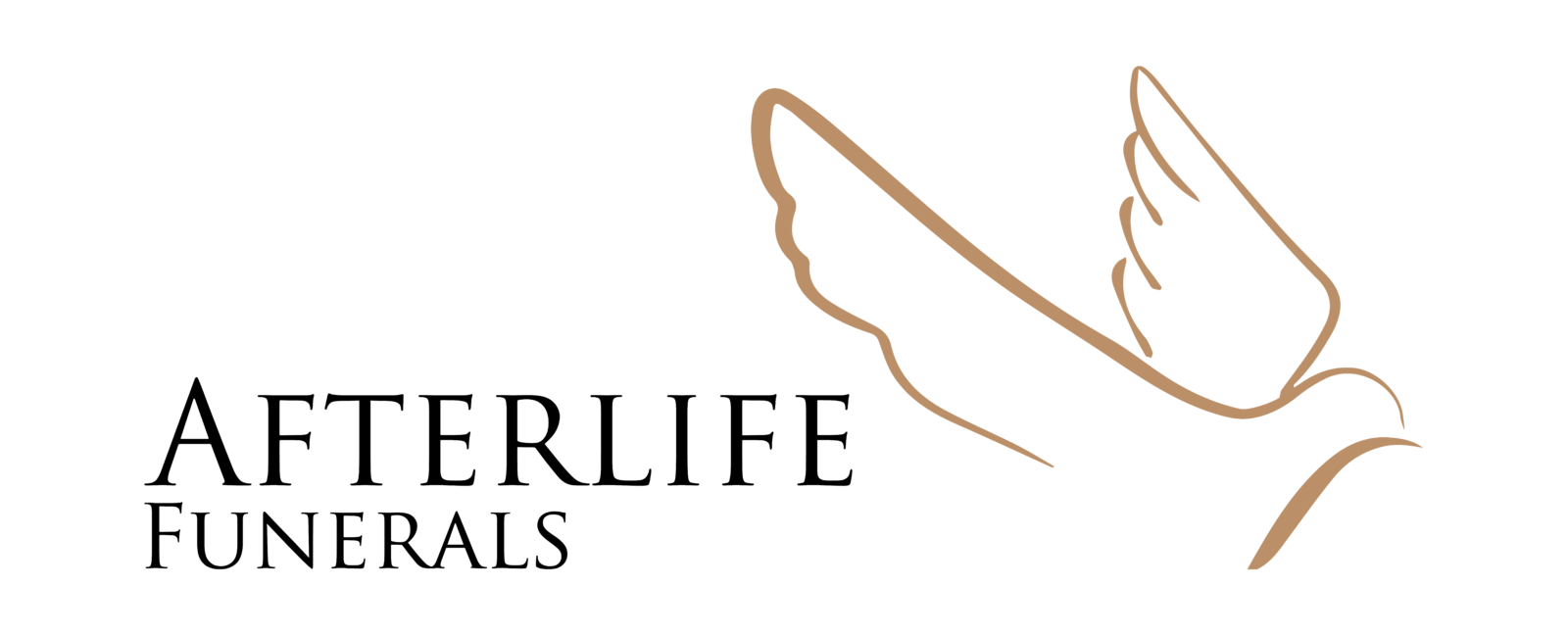The Evolution of Funeral Services in Australia.
These days our dead are rarely cared for at home: in the vast majority of cases the body is whisked from a hospital or nursing home directly to a funeral director’s mortuary. While we have come to accept this as normal, it is actually a very recent phenomenon. Current practices have broken with an established tradition of family involvement with the dead that goes back to the earliest days of Australia’s history. Right up until the 1920s, family and friends had direct participation in the funeral process, ‘the final act of love’. The body was prepared at home and kept there for a vigil until the funeral. The changes that have occurred since that time have had many repercussions – not the least of which is a transfer of power. Control of the funeral process has shifted from the traditional community base to an industry monopoly, and the role of the bereaved has been reduced to that of a consumer. The history of Australia’s way of death can help us to understand how it came to be this way.
Prior to white settlement, indigenous Australians had a variety of complex funeral rites; all involved the active participation of those close to the deceased. In the northern areas of the continent, the custom among many tribes was to lay the body on a platform, either on the ground or in a tree. Ceremonies sometimes included rotating the body so that the spirit would become disorientated, preventing it from returning to be among the living. There were many regional variations on these funeral ceremonies. Some tribes would build smoking fires to encourage the spirit to leave. At a certain point during the smoking ceremony, the mourners would move away quietly, leaving the spirit free to depart from the body to its final destination. The dead person’s name was never spoken – if the spirit hears its name or sees its image it might attempt to come back to the world of the living. We are likely to be familiar with the contemporary reminder of this indigenous belief: a warning that a particular broadcast contains the name or image of a deceased person sometimes precedes television or radio shows.
The mourning tradition varied between communities but typically it would last until the bones had been cleaned by the natural elements. Grief was readily expressed by weeping or wailing and in some cases by self-harm, such as cutting or mutilating the flesh. In certain areas, a widow in mourning would wear a cap made from white clay. After the bones were clean, depending on local custom, they might be coated in red ochre and stored in a cave or hollow log along with the bones of other members of the clan. The end of the mourning period was usually marked by a final ceremony. There were, of course, many different practices. In some cases, special items of significance to the deceased, such as shells, were placed with the remains. On Bathurst Island, the bones were buried in graves marked with intricately painted burial poles. In the southern regions of the continent, the body was usually buried in such a way that it faced the deceased’s totemic ground. Cremation was rare on the mainland but was practised in Tasmania.
The early colonial settlers brought with them the customs of the mother country. Their funerals were simple and were organised around their home and church. Most people either died at home or were brought home if they died elsewhere. The women would generally wash and prepare the body for burial. In the time before the burial the deceased was then kept at home for a vigil – this being the period when friends and relatives visited to pay their respects. A member of the clergy usually conducted religious rites at the home. When the time came, selected mourners carried the body in a coffin and placed it in a horse-drawn cart. They did not use a special hearse. Typically, the mourners would follow the cart on foot to a local church cemetery where, at the graveside, a simple ceremony was conducted.
While death involved active participation from the community, we should not be overly romantic about the past. These were the days when men and women had strictly defined roles: while the women normally took care of the body, the men busied themselves with the funeral arrangements. Those arrangements included getting a local carpenter to make a coffin or building one themselves, and digging the grave. Needless to say, if the deceased was Irish, there would also be a wake to organise. There were occasions when women were excluded from the funeral itself because it was thought that the emotions felt at the graveside might be too intense for women to bear. In retrospect this is surprising considering the close contact the women would have had with the body when they prepared it for burial. Children, who had often been playing around the dead body for a few days during the vigil, would also sometimes be left at home on funeral day. These demarcations were by no means universal, and even when they did arise, everyone still had their role to play.
By the mid-nineteenth century, changes to funeral practices were widely evident. The Victorian era is known for its obsession with death. Queen Victoria herself had a famously extended period of mourning for her late husband, Prince Albert. Funerals for the upper and middle classes became elaborate and expensive. Books on funeral etiquette were popular. Australians, not for the first time, wanted to ape the habits of the English aristocracy. Specialist retail shops selling mourning clothes flourished – there was more black being worn than at a 1990s Melbourne gallery opening. Crepe was the fabric most often associated with mourning. A husband’s death meant a whole new wardrobe. The widow was expected to wear ‘deepest black parramatta and crepe for the first year of deep mourning, followed by six months of dull black silk, replaced by half-mourning colours of grey and lavender for the last six months.’
Victorian fashions dictated that the simple home-and church-based funerals of the past needed to be elevated to a higher status. While the private side of the mourning process remained very much centred in the home, the horse and cart no longer had sufficient prestige – hearses became de rigueur or fashionable. The demand for hearses presented the opportunity for traditional coffin-makers to expand their business to funeral requisites. Coffin-makers ‘under took’ to assist with the funeral, hence the trade ‘undertaking’. There was also good business in providing fashionable funeral accessories: plumes to decorate the horses, and embroidered palls or cloths of purple or black to be placed on the coffin or, more grandly, carried above it by pallbearers. As time passed, the hearses became more and more decorative; with bevelled glass panels, ornamental urns at each corner and festoons of plumes. Although this was a boom period for undertakers, the ‘dismal trade’ began to experience an image problem, resulting from the connotations of making money from death.
After the Victorian period there was a shift away from lavish funeral displays. The vast numbers of Australian soldiers killed in the First World War were buried in simple cemeteries close to where they fell. The soldiers’ names were subsequently memorialised on public monuments built in towns across Australia. Then, just as the surviving soldiers were returning from Europe the Spanish flu pandemic hit Australia, killing 12,000 people from a then population of 4 million. The sheer number of people killed as a result of the war and the flu pandemic meant that the showy individualism of the Victorian era rapidly lost its appeal. With death on such a massive scale, the individual displays of mourning were no longer feasible, and the extravagance seemed inappropriate.
By 1920 the troops were home, the flu had passed and the grand funerals of the previous era had all but disappeared. If ever there was an opportunity to cut the crepe and return to the traditional home-based funeral this was it. However, the undertakers adopted a sophisticated public relations initiative aimed at maintaining the ground they had gained in the Victorian era. It was felt that what undertakers needed was a new name that would disassociate their work from the negative image. Various new terms were tried. In Australia, ‘funeral parlour’ was selected as having the appropriate ring. The parlour was often the room in a Victorian house where the vigil was held, and so ‘parlour’ was retained to preserve the cosy association with the household. The Americans followed a similar line of reasoning but, typically, thought bigger than their Australian colleagues. Why confine yourself to a room when you can have the whole house? They adopted the bolder title of ‘funeral home’. Unfortunately for the Australians, the parlour was about to disappear from the floor plans of the new Edwardian houses. What once evoked a sense of homeliness now just seemed old-fashioned and even a bit seedy. After all, there were billiard parlours – and in later decades even worse! The hunt for a contemporary name finally produced the term ‘funeral director’. This has since become the accepted name Australia-wide.
The newly named funeral directors, busy consolidating their foothold in the Australian funeral scene, were about to receive some unexpected assistance. It came from two separate sources. First the period between the wars saw the decline in the power of the established Western Christian churches, at least the non-Catholic ones. The diminishing role of the church left a vacuum that the funeral directors were able to fill: if people were turning away from the church for solace at the time of a death, then funeral directors could seize the opportunity to step into the breach. Second, advances in medical science meant that many of the sick were being transferred from the home to be treated in hospitals. Moreover, with the subsequent growth of nursing homes, the frail and elderly were also being transferred from their homes to institutions. The end result was that the bodies of people who died in hospitals or nursing homes were transferred out of the institution straight to a funeral director’s mortuary.
As the twentieth century neared its end, the Australian funeral industry, comprising locally owned businesses competing against each other, was an entrenched aspect of the Australian way of death. The same period saw growth in the American funeral industry. There, the industry grew so large and so profitable that corporations were inspired to buy up many independent operators. These corporations then cast their eye on a global market, and the Australian industry presented as a prime target.
In the early 1990s two of the largest and most acquisitive US funeral corporations – Service Corporation International (SCI) and Stewart Enterprises – arrived in Australia. The Houston-based Service Corporation International is the world’s biggest funeral corporation. Back home in the States, SCI has a ‘vertical structure’. It owns funeral homes, cemeteries, crematoriums, even flower shops and has over 20,000 employees. SCI entered Australia in 1993 as Service Corporation International Australia Pty Ltd (SCIA). Stewart Enterprises, from Louisiana, is the oldest publicly traded funeral corporation in the US, and in 2004 had sales worth US$514.7 million.
After landing on Australian shores, both the American companies bought up big. They concentrated their efforts in the capital cities and appeared to purchase whatever they could get their hands on, be it funeral businesses, cemeteries or crematoriums. Within two years, SCIA already owned 75 per cent of the crematoriums in New South Wales. In no time, many of Australia’s best-known funeral firms, including well-known names like Le Pine, White Lady and Simplicity, became American ‘brands’.
What nobody predicted was that a mere decade after the raiders landed, they inexplicably and suddenly withdrew. We know now that after the whirlwind international spending spree of the 1990s, things suddenly got tight for SCI and Stewart Enterprises. Aggressive worldwide acquisitions and other global financial issues caused the number-crunchers to become concerned. In both cases, head office reacted swiftly by calling for a withdrawal from Australia. So, as rapidly as they came, both US death-care giants cashed up their Australian brands and withdrew. The American companies have gone, but the repercussions of their takeovers and the corporate culture that they introduced continue to have a far-reaching influence on the local industry.
Stewart Enterprises retreated from its Australian base in Queensland back to its international headquarters in Louisiana. It sold off its Australian business to some of Queensland’s richest people. The new owners named their purchase Bledisloe Holdings. By 2002 Bledisloe had a revenue stream of A$40 million and owned well-known firms such as WD Rose, Giannarelli, Joseph Allison, Metropolitan Funerals, Boland Funerals, and Gregory and Carr Funerals.
Meanwhile, SCIA was sold in 2001 to a consortium led by a subsidiary of the Macquarie Bank. The Macquarie Bank is an infrastructure specialist that is heavily involved in toll roads. The group paid A$260 million for SCIA, with the American parent, at that stage, retaining 20 per cent of the company. SCIA was based in Sydney. A prominent portfolio manager, commenting on the consistently high earnings from this purveyor of death-care, was moved to enthuse: ‘It’s as close to . . . a toll road as you can get.’ In 2003 the Macquarie Bank–led consortium then floated their cash cow on the Australian Stock Exchange as InvoCare. InvoCare then took over the SCIA brands. InvoCare is now Australia’s biggest funeral provider.
Bledisloe and Invocare, together with a few local firms that have gone on the acquisition trail, wield enormous influence. For example, InvoCare now directs the funerals of one in five Australians. In New South Wales it cremates or buries about one-third of all who die. In Victoria, Le Pine (InvoCare) and WD Rose (Bledisloe), (at the time of this writing, Bledisloe has now been taken over by InvoCare) together with two other large companies – Tobin Brothers and John Allison/Monkhouse – control about 70 per cent of the market. Since this concentration has occurred, prices of funerals have increased. The New South Wales Council of Social Services gave evidence to the Standing Committee on Social Issues for the New South Wales Parliament that, among other things, ‘the excessive price of funerals . . . is a consequence of increased concentration of ownership.’
The Australian funeral industry as it exists today has irrevocably changed – the central warehousing of bodies, the prevalence of viewings, embalming and pre-paid funerals, and the merchandising of everything from memorial books to cremation urns is all part of the American legacy. The corporate management approach, too, has become part of the Australian way of death. Staff at the big corporations are sent to seminars to learn subtle sales techniques aimed at convincing the consumer to ‘supersize’ the funeral. Previously established firms are now brand labels pitched to various target markets: Le Pine is upmarket; White Lady is for women; Simplicity is for no-nonsense types and so on.

In country areas, many small funeral businesses struggle along looking after one funeral a week. They are generally owned by trusted people who have good links with their local community. Obviously in some cases, budgetary considerations mean that corners need to be cut. The station wagon used to transport corpses may also be used to ferry the kids to footy on the weekend. The business may be a simple shop without a sophisticated mortuary. In some cases, they have no refrigeration equipment and have to rent cool-room space from another funeral business. In other words, their facilities may not be significantly different from those available to any member of the public.
It must be stressed that the vast majority of funeral directors are honourable and do pay the utmost respect to the dead.
Nevertheless, there is evidence that despicable practices can occur with backyard operators. In 2005 the Victorian parliament conducted an inquiry into the funeral industry – some witnesses gave shocking accounts of how the dead were treated. One witness told of bodies that were stacked on top of each other in a backyard shed without refrigeration. In that particular case there was discharge running down over the bodies from the top of the stack to the bottom. Another witness reported that a casual worker employed by a funeral director collected a dead baby from a hospital and carried it away in the boot of his car. Because of their small size, babies seem to be particularly vulnerable to abuse. The inquiry was told that one stillborn baby was kept cool in a kitchen fridge. The Australian funeral industry currently remains unregulated. Anybody can hang up a shingle and call him-or herself a funeral director. This is an area that desperately needs reform.
A look at the history of funerals in Australia reveals that the death-care industry has imposed itself top-down on Australian society. Lately, however, there have been signs that people are ready for a change. Gone are the days when mourners were prepared to sit passively in church, listening to a well meaning minister or priest give a second-hand and often error-ridden account of the deceased’s life. Now, family members or friends deliver the eulogy, children might read poetry and the deceased’s favourite songs are played. Families are taking the ashes out through the gates of the crematorium and scattering them at a place that has personal significance. Many who have suffered loss from a traffic accident are building roadside memorials without seeking anybody’s permission. (this is something that needs to be looked at, especially when it is on someone else front fence) People are curious about what goes on inside a mortuary. There has been a spate of television shows and documentaries about the funeral industry. Many, like Six Feet Under, have an irreverent and myth-busting take on the industry as seen from the inside. Attitudes are changing.
There has also been a growing sense of unease about death as a commodity. This unease manifests as a concern that the industry seems to take advantage of people at a time of emotional vulnerability. People are reacting against the corporate model that suggests you should show respect for the dead by spending large sums of money on their funerals. They are concerned that the role of the bereaved has been reduced to that of a consumer.
Baby boomers might have hoped they’d die before they got old, but time is ticking on. Within the next decade, death rates in Australia are set to surge from about 130,000 a year to around 150,000. That extra 20,000 deaths a year will create a ‘golden age of death’, and with industry commentators predicting a marriage between the funeral and health-care industries, people are right to feel concerned.
Source: www.aifp.org.au


